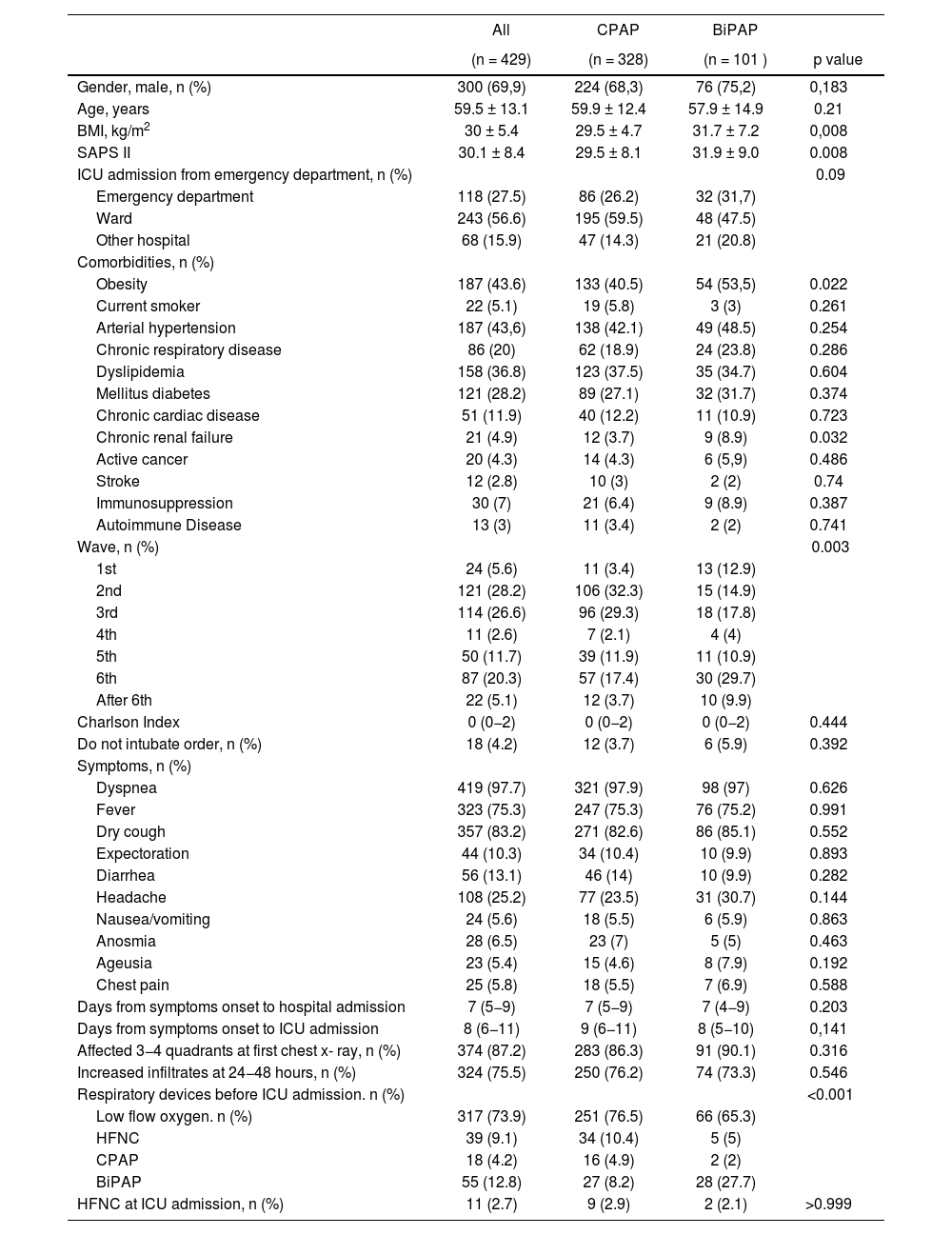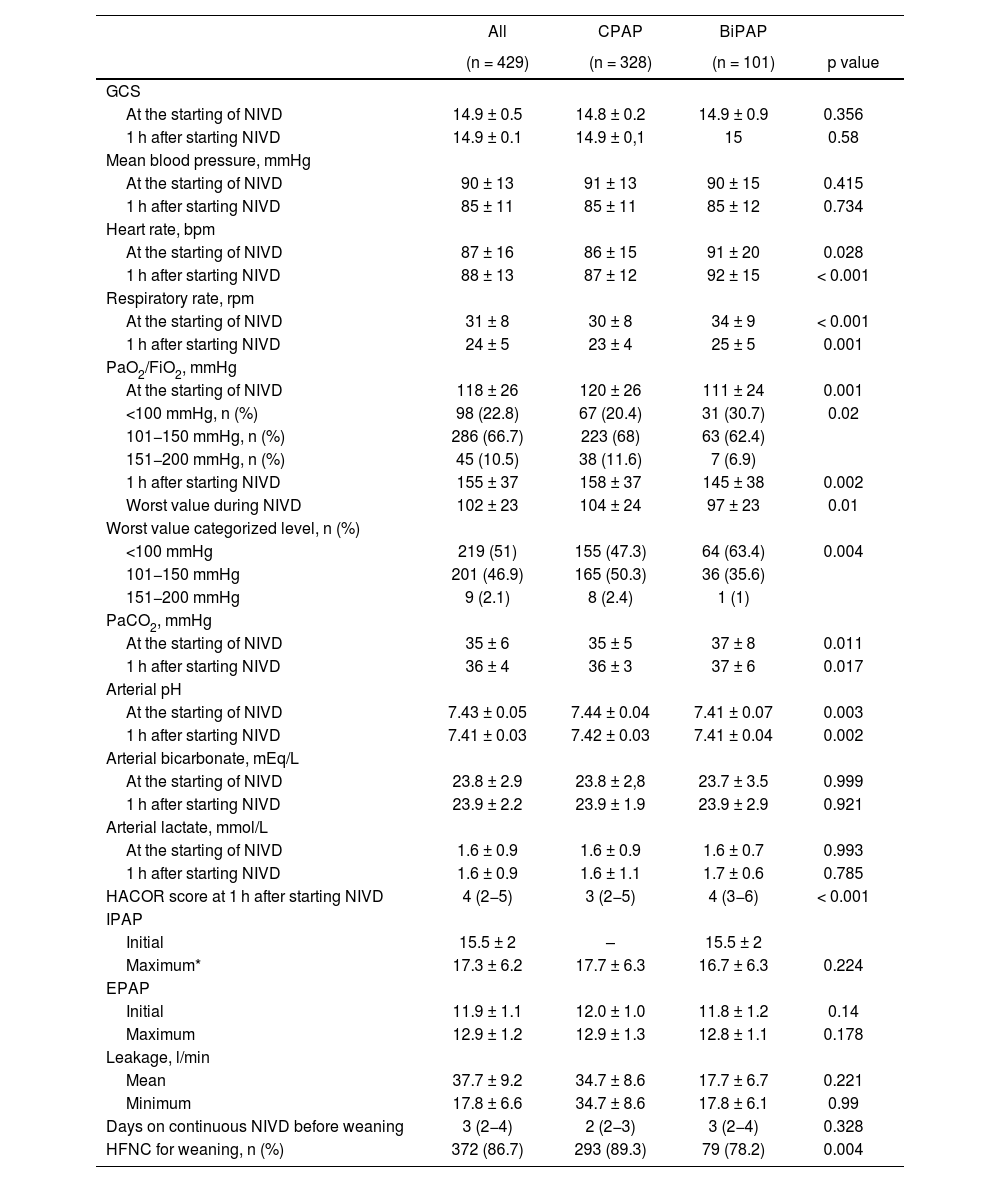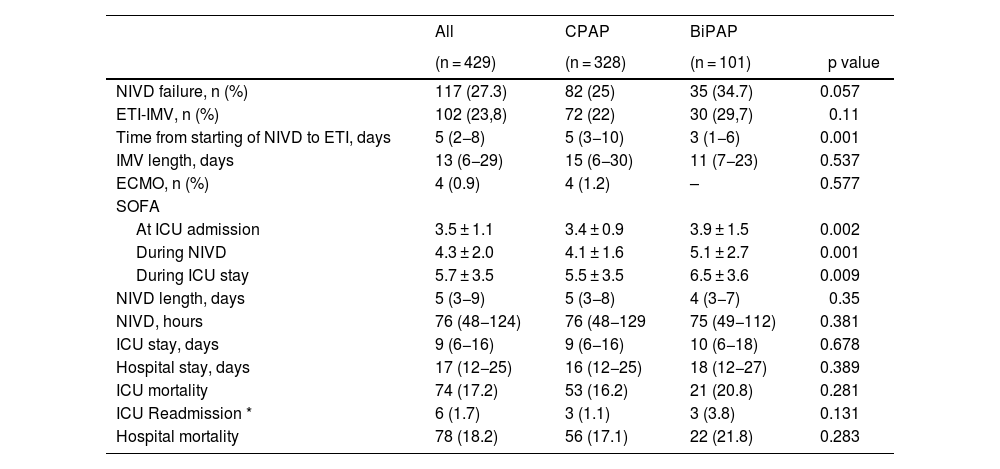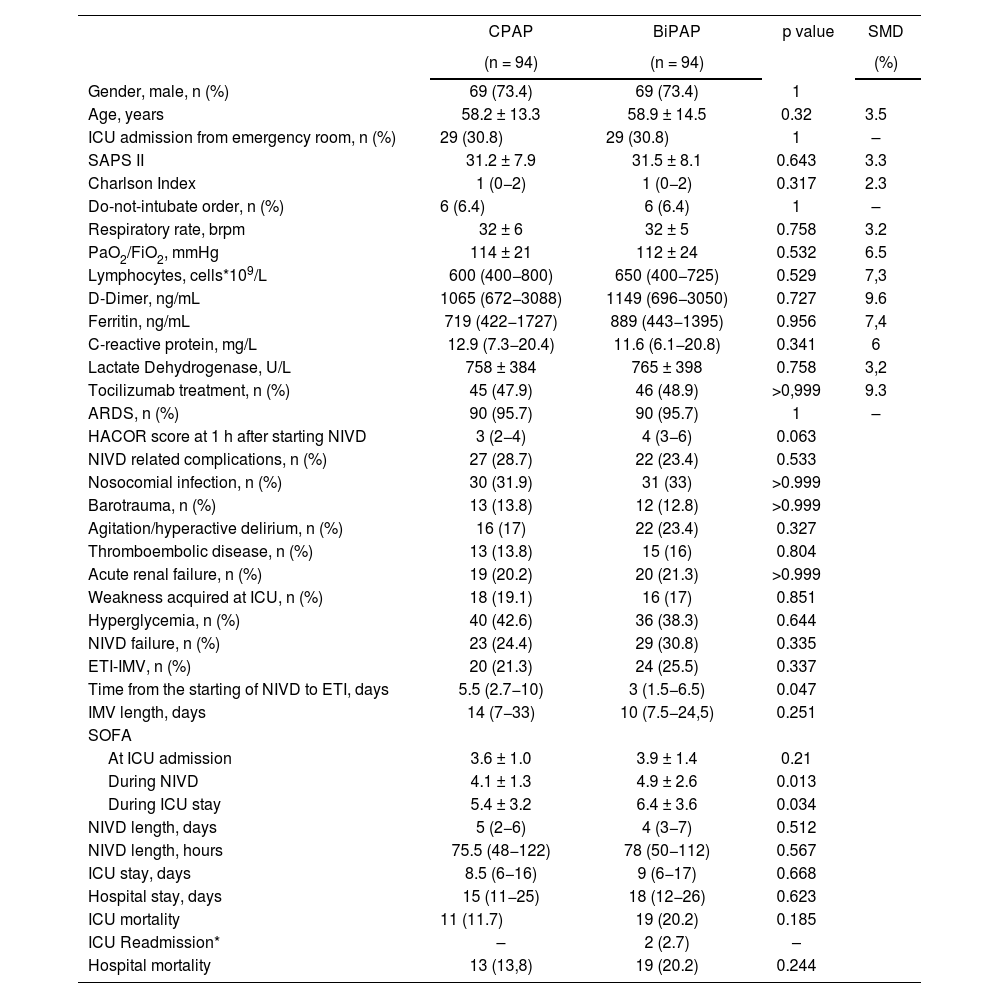The purpose of this study was to analyze the differences in the effectiveness and complications of CPAP versus non-invasive ventilation on bilevel positive airway pressure (BiPAP) in the treatment of COVID-19 associated acute respiratory failure (ARF).
DesignRetrospective observational study.
SettingICU.
PatientsAll COVID-19 patients, admitted to an ICU between March 2020 and February 2023, who required CPAP or BiPAP were analyzed.
InterventionsUse of CPAP or BiPAP in COVID-19 associated ARF.
Main variables of interestInitial clinical variables, CPAP and BiPAP failure rate, complications, in-hospital mortality.
Results429 patients were analyzed, of whom 328 (76.5%) initially received CPAP and 101 (23.5%) BiPAP. Initial respiratory rate was 30 ± 8 in the CPAP group and 34 ± 9 in BiPAP (p < 0.001), while PaO2/FiO2 was 120 ± 26 and 111 ± 24 mmHg (p = 0.001), respectively. The most frequent complication related to the device was claustrophobia/discomfort, 23.2% in CPAP and 25.7% in BiPAP (p = 0.596), while the most frequent complications not related to the device were severe ARDS, 58.6% and 70.1% (p = 0.044), and hyperglycemia, 44.5% and 37.6%, respectively (p = 0.221). After adjusting by propensity score matched analysis, neither failure of the device (OR 1.37, CI 95% 0.72–2.62) nor in-hospital mortality (OR 1.57, CI 95% 0.73–3.42) differed between both groups.
ConclusionsEither non-invasive ventilatory device failure or mortality rate differed in patients initially treated with CPAP versus BiPAP.
El objetivo del estudio ha sido analizar las diferencias en la efectividad y complicaciones de CPAP versus ventilación no invasive en modo doble nivel de presión (BiPAP) en el tratamiento de la insuficiencia respiratoria aguda (IRA) relacionada con COVID-19.
DiseñoEstudio observacional retrospectivo.
ÁmbitoUCI.
PacientesFueron analizados todos los pacientes COVID-19, ingresados en UCI entre Marzo de 2020 y Febrero de 2023, que requirieron CPAP o BiPAP.
IntervencionesUso de CPAP o BiPAP en la IRA relacionada con COVID-19.
Variables de interés principalesVariables clínicas iniciales, fracaso de la CPAP o BiPAP, complicaciones, mortalidad hospitalaria.
ResultadosFueron analizados 429 pacientes, de ellos 328 (76,5%) inicialmente recibieron CPAP y 101 (23,5%) BiPAP. La frecuencia respiratoria inicial era de 30 ± 8 en el grupo CPAP y 34 ± 9 en BiPAP (p < 0,001), mientras la PaO2/FiO2 era 120 ± 26 y 111 ± 24 mmHg (p = 0,001), respectivamente. La complicación más frecuente relacionada con el dispositivo fue claustrofobia/malestar, 23,2% en CPAP y 25,7% en BiPAP (p = 0,596), mientras que las complicaciones más frecuentes no relacionadas con el dispositivo fueron SDRA severo, 58,6% y 70,1% (p = 0,044), e hiperglucemia, 44,5% y 37,6%, respectivamente (p = 0,221). Tras ajustar mediante análisis de propensión apareado, ni el fracaso del dispositivo (OR 1.37, IC-95% 0,72 a 2,62) ni la mortalidad hospitalaria (OR 1,57, IC-95% 0,73 a 3,42) mostraron diferencias entre ambos grupos.
ConclusionesNi el fracaso del dispositivo no invasive ni la mortalidad difirieron entre los pacientes inicialmente tratados con CPAP o BiPAP.
Article
Go to the members area of the website of the SEMICYUC (www.semicyuc.org )and click the link to the magazine.











